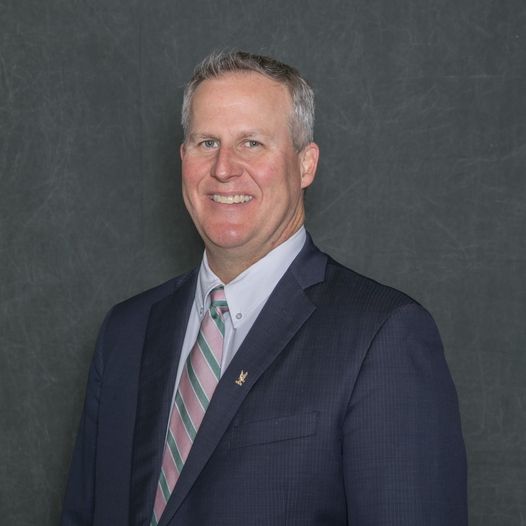The Federal Aviation Administration has paved the way for a Texas-based drone company to allow one operator to pilot “swarms” of up to three drones without a visual observer. Others could soon follow suit.
An exemption the FAA recently granted to drone manufacturer Hylio allows the company to simultaneously operate groups of its “fully autonomous” AG-230 drones at weights above 55 pounds for agricultural uses such as spraying or seeding cover crops. It also allows pilots to operate Hylio drones at night.
 Arthur Erickson, Hylio
Arthur Erickson, HylioFAA regulations currently require two people — a pilot and a spotter — to monitor the flights for each drone weighing more than 55 pounds, Hylio CEO Arthur Erickson told Agri-Pulse. This means if a company wanted to fly three drones, it would need to have six people present.
The exemption from current regulations lasts until March 31, 2026.
“It’s a huge win, of course for us, but also everybody, because it is precedent-setting,” Erickson said. “This is a rising-tide-lifts-all-ships type of situation.”
Drones are emerging as a technology that could provide airborne assistance to farmers for a variety of tasks. The Government Accountability Office last year found that swarming drones, or coordinating multiple vehicles at one time, holds potential for helping farmers “plant seeds, identify disease outbreaks by surveilling large areas, and deploy treatments such as fertilizers to crops.”
Hylio petitioned for the exemption in October, citing its successful use of AG-230 drone swarms for 15,000 flights over more than 50,000 acres of farmland in El Salvador, Honduras and Guatemala between 2018 and 2020. Many of these flights, according to the petition, were done at night — between 6 p.m. and 12 a.m.
Erickson told Agri-Pulse the drones are autonomous and guided using a visual interface, though they can be operated manually. The pilot uses a map-based application to outline an area they’d like the drone to spray on, selects the dosage rates, and sets other parameters. The drones then fly out and distribute their payloads, while periodically returning to refuel or be refilled.
Adding multiple drones with fewer operators into the mix, Erickson said, will improve efficiency. Farmers who were able to handle 60 acres per hour with drones can now do 180 acres per hour by using three at once, which he says is a “huge” difference.
“For the longest time, drones were relegated to the philosophical space where it’s, ‘OK, they’re good for spot spraying because they don’t have huge payloads, but they’re never going to directly replace tractors or airplanes or helicopters because they just don’t have the topline productivity,'” he said. “But now they do, as long as you deploy enough drones at the same time.”
Erickson added that the exemption represents a greater acceptance of drone autonomy by the FAA, and he believes that attitude could continue. Eventually, he wonders if humans will even be required to be on site to operate drones.
“What this leads to is eventually taking the human out of the equation,” he said.
Gregory Walden, a lawyer for the Small UAV Coalition, filed a comment last year in support of Hylio’s petition. The drones would be flown between 10 feet and 30 feet above the ground and over “predetermined, uninhabited, private, or controlled-access property,” limiting their potential risks, he said.
It’s easy to be “in the know” about what’s happening in Washington, D.C. Sign up for a FREE month of Agri-Pulse news! Simply click here.
“With a geo-fence boundary, and operations within the visual lone of sight of the pilot, there is little to no air risk or ground risk requiring any additional mitigation," Walden wrote.
 Andrew Moore, National Agricultural Aviation Association
Andrew Moore, National Agricultural Aviation AssociationWalden added that the AG-230 model “contains several safety systems, including redundant GPS, return-to-launch, and rotor fail protection, providing additional layers of safety.”
Andrew Moore, the CEO of the National Agricultural Aviation Association, however, expressed some concern about potential risks that autonomous drones may pose to agricultural aircraft pilots, who operate between 500 and 10 feet above the ground. He argued in a comment that drones can be hard for aircraft pilots to spot in the air and present hazards similar to “birds and other low-altitude obstacles such as other crewed aircraft and towers.”
There have been around 142,000 collisions between civil aircraft and wildlife between 1990 and 2013, he said. Twenty-five of these led to fatalities. Mallard ducks, turkey vultures and red tail hawks, he said, have dented aircraft wings and broken through cockpit windows. He put the total losses associated with wildlife strikes at nearly $1 billion between 1990 and 2012, when adjusted for inflation.
“Birds, already a risk to crewed aviation, cause less damage in comparison because they are softer and made mostly of water,” Moore said. “A collision between one of these un-crewed aircraft and a crewed aircraft could be catastrophic.”
However, FAA Flight Standards Service Acting Deputy Executive Director Hugh Thomas wrote in his decision that there have been no reported aircraft collision incidents involving agricultural drones, since most are limited to flying no higher than 200 feet above the ground. Hylio pilots, he added, would be responsible for seeing and avoiding manned aircraft.
Andy Kreikemeier, a Nebraska farmer who helps operate Infinity Precision Ag, a company that provides services using Hylio drones, told Agri-Pulse the exemption will make it easier for businesses like his to work on more acres with less people. But he added that Infinity Precision Ag still plans to have spotters on site, for extra help when refilling and changing batteries in the drones. He also believes it’s nice to have an extra set of eyes.
“I like the safety aspect of that,” he said.
For more news, go to www.Agri-Pulse.com


